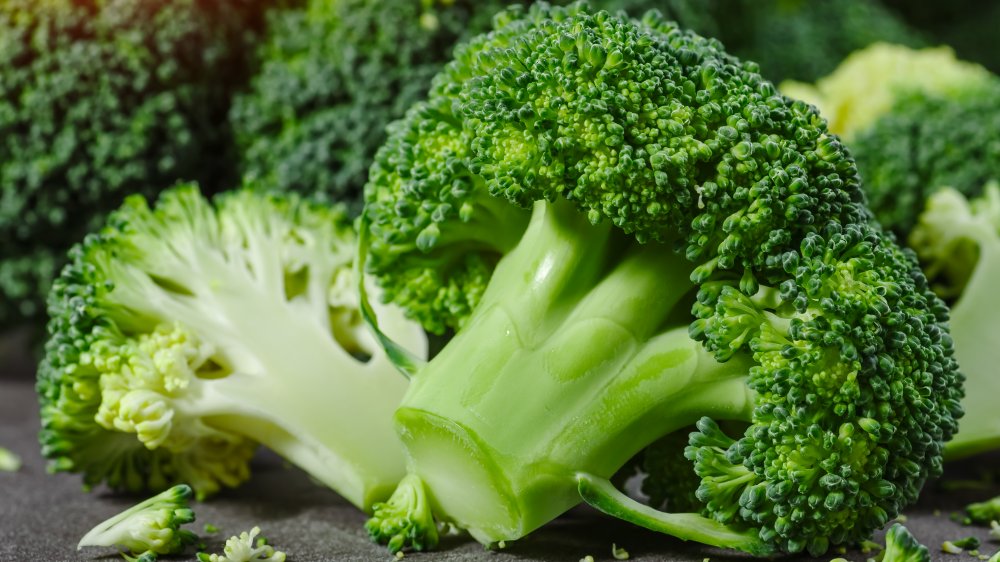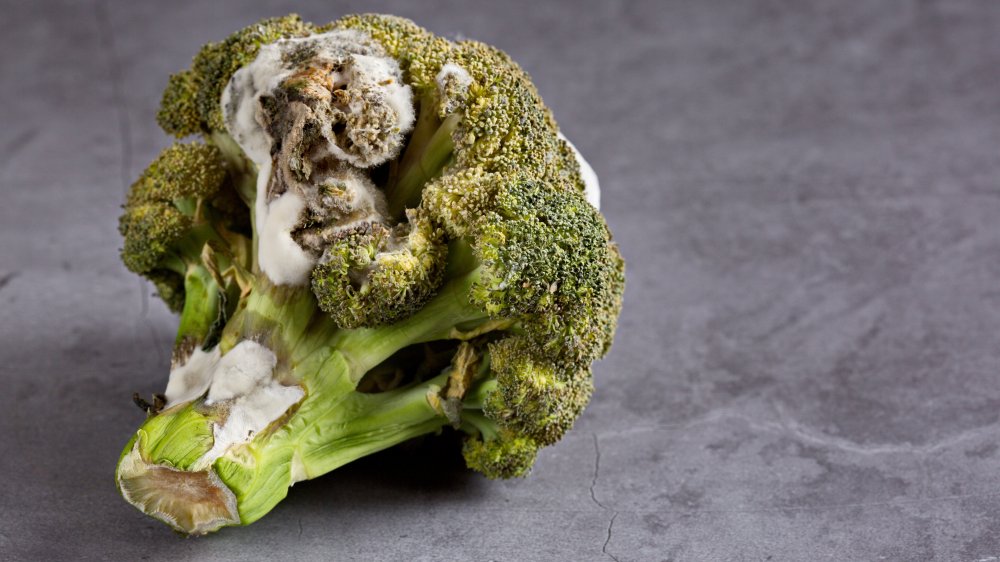What You Should Do If You Find Mold On Your Broccoli
While broccoli packs all the visual charisma of Clark Kent, it is truly a superfood. It won't give you X-ray vision, but as Healthline details, people with impaired vision may see benefits thanks to the lutein and zeaxanthin contained in broccoli. It may not fill you with the roid-rage-like strength that Popeye acquires after eating spinach, but that's a good thing. A green goldmine of vitamins and minerals, broccoli will provide roughly 70 percent of your recommended daily intake of vitamin C in a half-cup serving. It's also loaded with folate, potassium, iron, and other crucial nutrients.
Broccoli is staunchly anti-oxidant and pro-you. Observational studies indicate that it may be brimming with cancer-fighting compounds. Unfortunately, there are times when this super-healthy plant can become kryptonite to your appetite. And one of those times is when it grows nasty splotches of mold. The thought of old, moldy broccoli stinks worse than the odor that wafts from this veggie when you overcook it. (The 'S' on broccoli's chest stands for "stinky.") But is there a way to save the day when your super veggie resembles a fuzzy Lois Lane? Or do you reject your bizarro broccoli as all bad?
You might assume that the best recourse is to round up the remaining members of the Digestive Justice League to rescue your blemished broccoli. But to paraphrase Foucault, knowledge is your superpower.
From superfood to super vile?
The first thing to know is what to look for and when to expect it. Can It Go Bad? says raw broccoli stored in the fridge can go bad within seven to 14 days. Cooked broccoli may foster mold within a few days. It may take the form of fuzzy white spots, but you should also be wary of black or brown sections. However, visibility isn't guaranteed. As Invisiverse observes, mold may be partly or completely invisible to the unaided eye, extending in threadlike stretches across and under the surfaces it calls home. Since you don't have X-ray vision, your response to a moldy section of food should depend partly on the physical characteristics of the food itself.
Soft, moist, or porous food will be a field day for mold. It readily spreads on bread, soft fruits, yogurt, which is why you should never consume them when you spot mold. But broccoli is made of tougher stuff, and its firm structure is better equipped to slow the fuzzy onslaught. So if it looks like your broccoli head grows a little mold, cut it off. You don't have to decapitate your broccoli, but shave off the fungal stubble like an unwanted beard, and cut off a bit extra for good measure. If you spot lots of mold spots, then off with your broccoli's head – throw the whole thing out. It's better safe than sorry, and very moldy broccoli is a sorry sight indeed.

